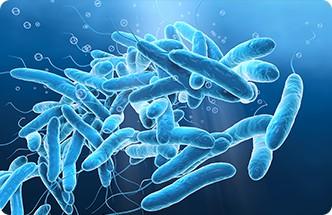Introduction
The evaluation of permeability is a crucial aspect of drug discovery and development. It provides insights into how well a compound can cross biological membranes, which significantly influences its bioavailability and therapeutic efficacy. One of the most widely utilized techniques for assessing permeability is the Parallel Artificial Membrane Permeability Assay (PAMPA). This in vitro method has gained attention for its predictive capacity, simplicity, and ability to replicate the conditions of biological membranes. This article delves into the principles of PAMPA, its methodology, its advantages, and its role in facilitating the drug development process.
The Basics of PAMPA
PAMPA is an assay designed to approximate the passive diffusion of compounds across biological membranes, such as the intestinal barrier. This method employs artificial membranes that mimic the lipid bilayers found in living organisms. The main components of the PAMPA system include:
PAMPA Membrane: The membrane in PAMPA is a porous filter coated with a lipid layer that simulates the properties of a biological membrane. The lipid can vary in composition, allowing for different evaluations of PAMPA permeability under distinct conditions. Commonly, phospholipids forming a bilayer are used to create a model that resembles the intestinal barrier or the blood-brain barrier.
PAMPA Assay Setup: The assay setup consists of two compartments: one side is filled with a test compound solution (donor side), while the other side (acceptor side) contains a receptor solution (often a buffer with or without serum). Over time, compounds can diffuse across the PAMPA membrane from the donor compartment to the acceptor compartment.
Methodology
The PAMPA assay is relatively straightforward:
Preparation of the PAMPA Membrane: A porous filter is coated with a lipid layer to mimic the biological membrane.
Loading the Compound: A solution of the test compound is placed in the donor chamber.
Incubation: The system is incubated for a specified period, typically at a controlled temperature.
Sample Collection: After incubation, samples are taken from the acceptor chamber, and the concentration of the compound is measured, usually through techniques such as High-Performance Liquid Chromatography (HPLC).
Calculation of Permeability: The permeability of the compound is determined by calculating the amount that has diffused across the membrane over time, allowing for the assessment of the compound’s permeability coefficients.
Applications and Advantages of PAMPA
PAMPA has found extensive applications in the pharmaceutical industry for:
Screening Drug Candidates: It serves as an early screening tool for identifying compounds with favorable permeability profiles among libraries of new drug candidates.
Formulating Strategies: By understanding the absorption profiles of compounds, formulators can design appropriate drug delivery systems to enhance bioavailability.
Studying Mechanistic Pathways: PAMPA can help in elucidating the mechanisms of drug absorption and the influence of various physicochemical properties on permeability.
Advantages of PAMPA Include:
High Throughput: PAMPA allows for the simultaneous analysis of multiple compounds, making it ideal for screening large libraries efficiently.
Simplicity and Cost-effectiveness: The equipment required is comparatively simple and cost-effective, reducing the barriers to conducting permeability assessments.
Predictive Capabilities: While PAMPA is an in vitro technique, it has demonstrated good correlation with in vivo data, particularly for passive absorption.
Versatility: The membrane and test conditions can be modified to simulate different physiological environments (e.g., CNS permeability), allowing researchers to evaluate a compound under various conditions.
Limitations of PAMPA
Despite its advantages, PAMPA is not without limitations. The primary concerns include:
Lack of Active Transport Evaluation: PAMPA primarily assesses passive diffusion and does not account for potential active transport mechanisms that could be essential in drug absorption.
Simplified Membrane Model: The artificial membrane may not fully replicate the complexity of biological membranes, including the presence of metabolic enzymes and transporters.
Limited Predictive Power for Highly Polar or Ionized Compounds: Compounds with high polarity or that exhibit pH-dependent ionization may not diffuse accurately through the PAMPA membrane.
Conclusion
The Parallel Artificial Membrane Permeability Assay (PAMPA) is a vital tool in the early phases of drug development, providing critical insights into a compound's permeability characteristics. By simulating biological membrane conditions, PAMPA offers a reliable method for screening drug candidates, thus streamlining the drug discovery process. While recognizing its limitations, the continued advancements in PAMPA methodologies hold promise for enhancing its accuracy and predictive capabilities, ultimately leading to more effective therapeutic agents in clinical use.



